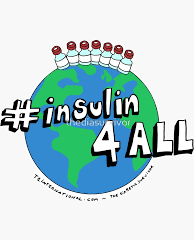Managing Type 1 Diabetes (T1D) is a lifelong journey that requires continuous learning, adaptation, and support. To gain deeper insights, I interviewed a certified diabetes educator, Colleen Killberg, who shared her expertise on diabetes management, nutrition, technological advancements, and advice for those navigating life with diabetes.
1. Career and Experience
What Inspired You to Become a Diabetes Educator?
Colleen shared that her passion for working with diabetic patients grew as she took more specialized classes in diabetes care. Seeing the impact of education on patients’ lives motivated her to focus her career on helping individuals manage their condition more effectively.
What Does a Typical Day Look Like?
The daily responsibilities of a diabetes educator vary based on whether they are working in an inpatient or outpatient setting:
- Outpatient: Focuses on pump training, nutrition counseling, and long-term diabetes management strategies.
- Inpatient: Works with newly diagnosed patients or those experiencing serious diabetes-related complications like diabetic ketoacidosis (DKA) or extremely high A1C levels.
Most Rewarding and Challenging Aspects of the Job
The most rewarding part of the job is seeing patients make progress—not just in managing their blood sugar levels but also in improving their mental well-being. The biggest challenge is working with individuals who are resistant to learning or taking control of their condition. Education remains a critical barrier in diabetes care and needs to be more widely prioritized.
Common Misconceptions About Diabetes
Many myths about diabetes persist, including:
- “People with diabetes can’t eat sugar.”
- “Insulin is harmful.”
- “Carbohydrates should be completely avoided.”
Education and awareness can help debunk these misconceptions and empower people to make informed choices about their health.
2. Diabetes Management
Challenges Faced in Managing Diabetes Inpatients
Managing diabetes in a hospital setting comes with several obstacles, including:
- Limited resources and insurance coverage.
- Ensuring patients receive adequate supplies (often only 30-day supplies are provided).
- Coordinating follow-up care and finding the right caregivers.
Despite these challenges, diabetes educators strive to provide as much support and education as possible to help patients transition to at-home management successfully.
Managing Diabetes as a College Student
For students, social events, travel, and alcohol consumption can complicate diabetes management. The key recommendations include:
- Moderation is essential.
- Eat before or while drinking alcohol to prevent blood sugar crashes.
- Check blood sugar more frequently during social events.
- Always carry a snack with both carbs and protein.
Underrated Habits for Stable Blood Sugar and Lower A1C
- Regular exercise.
- Planning ahead for meals and snacks.
- Portion control.
- Tracking blood sugar trends and adjusting meal times accordingly.
3. Nutrition
Dietary Recommendations for Blood Sugar Stability
A diabetes-friendly diet doesn’t mean restriction—it’s about balance and planning:
- Eat what you enjoy as long as you take the appropriate insulin dose.
- Focus on higher protein and lower-carb meals to sustain blood sugar levels.
- When dining out, review menus in advance and prioritize protein sources.
- Graze rather than eating large meals in one sitting.
- Pre-bolus insulin and plan ahead to prevent blood sugar spikes.
4. Technology
Biggest Advancements in Diabetes Tech
Recent advancements in diabetes technology have revolutionized care:
- Continuous Glucose Monitors (CGMs): Provide real-time glucose readings, reducing the need for frequent finger pricks.
- Pump Therapy & Closed-Loop Insulin Delivery Systems: Offer more precise insulin delivery and better overall blood sugar management.
The Future of Diabetes Technology (Next 5-10 Years)
The future looks promising with innovations focused on:
- Smaller, more accurate, and easier-to-use devices.
- Integrated CGM and pump systems.
- Longer insertion times to minimize the inconvenience of frequent changes.
Closed-Loop vs. Open-Loop Insulin Delivery
- Closed-loop (automated insulin delivery): Provides more control and reduces the need for constant monitoring.
- Open-loop (manual adjustments): Requires more patient involvement but allows customization.
- Pump Preference: Many educators lean toward tubeless pumps like Omnipod to prevent tubing issues, but the best choice varies based on individual needs.
Criteria for Choosing a Diabetes Management Approach
- Newly diagnosed individuals start with frequent finger pricks before transitioning to a CGM.
- Patients who struggle with self-monitoring may be introduced to a CGM sooner.
- More experienced patients may move to pump therapy faster.
5. Advice from a Diabetes Educator
What Everyone Should Know About Diabetes
- People with diabetes can eat what they want—they just need to be mindful of insulin dosing and carbohydrate intake.
- Awareness and education are key to managing the condition effectively.
How Caregivers and Loved Ones Can Provide Support
- Education is crucial. Understanding diabetes and knowing how to assist in case of high or low blood sugar emergencies is essential.
- Resources are not always accessible, but caregivers should seek credible information and training opportunities.
Recommended Resources for Further Education and Support
- American Diabetes Association (ADA) – Provides recipes, nutrition tips, and general diabetes education.
- Technology Websites (Dexcom, Medtronic, etc.) – Keep up with the latest advancements.
- Podcasts & Diabetes Camps – Offer community support and real-life insights.
- Always verify information to ensure credibility before relying on it for diabetes management.
Final Thoughts
Diabetes management is a lifelong learning process, but with the right education, tools, and support, individuals can take control of their health and live fulfilling lives. Whether you’re a patient, caregiver, or loved one, staying informed and proactive is key to navigating the challenges of diabetes with confidence.


